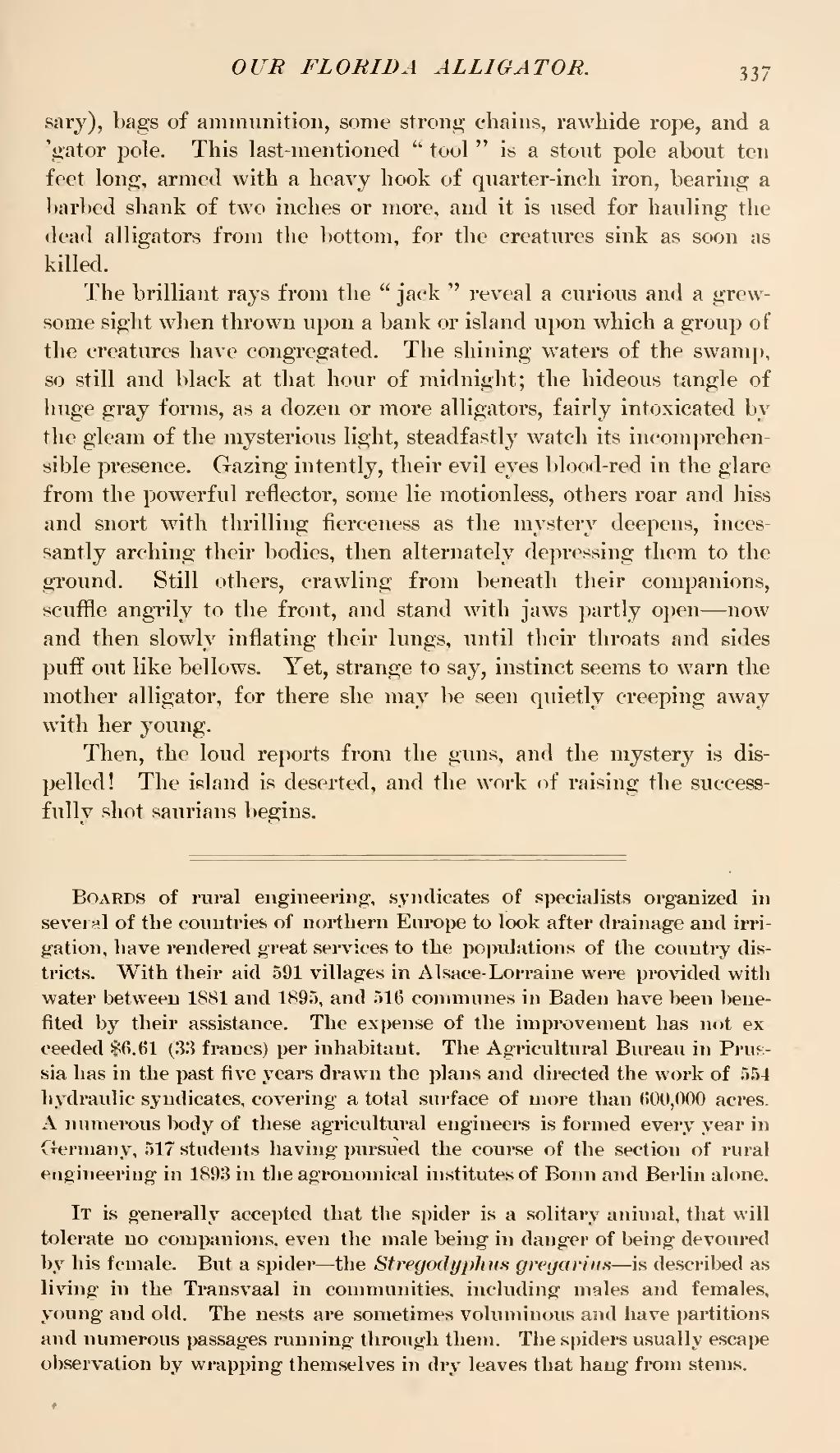sary), bags of ammunition, some strong chains, rawhide rope, and a 'gator pole. This last-mentioned "tool" is a stout pole about ten feet long, armed with a heavy hook of quarter-inch iron, bearing a barbed shank of two inches or more, and it is used for hauling the dead alligators from the bottom, for the creatures sink as soon as killed.
The brilliant rays from the "jack" reveal a curious and a grewsome sight when thrown upon a bank or island upon which a group of the creatures have congregated. The shining waters of the swam]), so still and black at that hour of midnight; the hideous tangle of huge gray forms, as a dozen or more alligators, fairly intoxicated by the gleam of the mysterious light, steadfastly watch its incomprehensible presence. Gazing intently, their evil eyes blood-red in the glare from the powerful reflector, some lie motionless, others roar and hiss and snort with thrilling fierceness as the mystery deepens, incessantly arching their bodies, then alternately depressing them to the ground. Still others, crawling from beneath their companions, scuffle angrily to the front, and stand with jaws partly open—now and then slowly inflating their lungs, until their throats and sides puff out like bellows. Yet, strange to say, instinct seems to warn the mother alligator, for there she may be seen quietly creeping away with her young.
Then, the loud reports from the guns, and the mystery is dispelled! The island is deserted, and the work of raising the successfully shot saurians begins.
Boards of rural engineering, syndicates of specialists organized in several of the countries of northern Europe to look after drainage and irrigation, have rendered great services to the populations of the country districts. With their aid 591 villages in Alsace-Lorraine were provided with water between 1881 and 1895, and 516 communes in Baden have been benefited by their assistance. The expense of the improvement has not exceeded $6.61 (33 francs) per inhabitant. The Agricultural Bureau in Prussia has in the past five years drawn the plans and directed the work of 554 hydraulic syndicates, covering a total surface of more than 600,000 acres. A numerous body of these agricultural engineers is formed every year in Germany, 517 students having pursued the course of the section of rural engineering in 1893 in the agronomical institutes of Bonn and Berlin alone.
It is generally accepted that the spider is a solitary animal, that will tolerate no companions, even the male being in danger of being devoured by his female. But a spider—the Stregodyphus gregarius—is described as living in the Transvaal in communities, including males and females, young and old. The nests are sometimes voluminous and have partitions and numerous passages running through them. The spiders usually escape observation by wrapping themselves in dry leaves that hang from stems.

